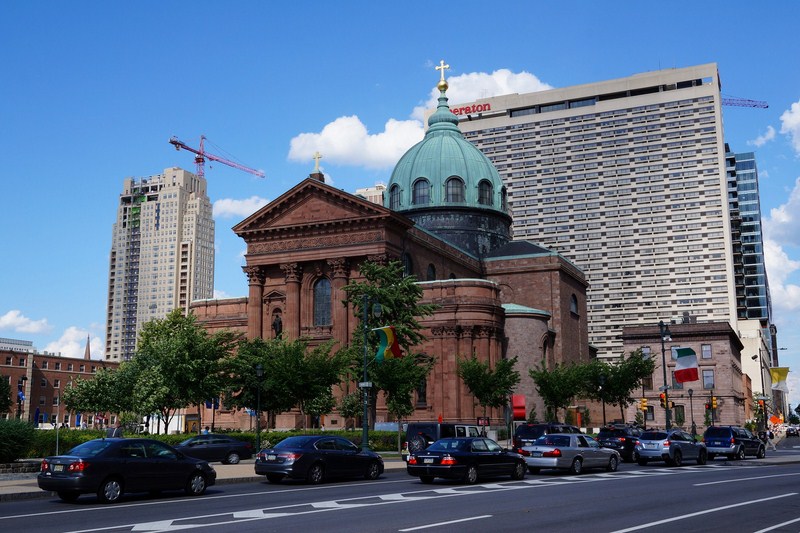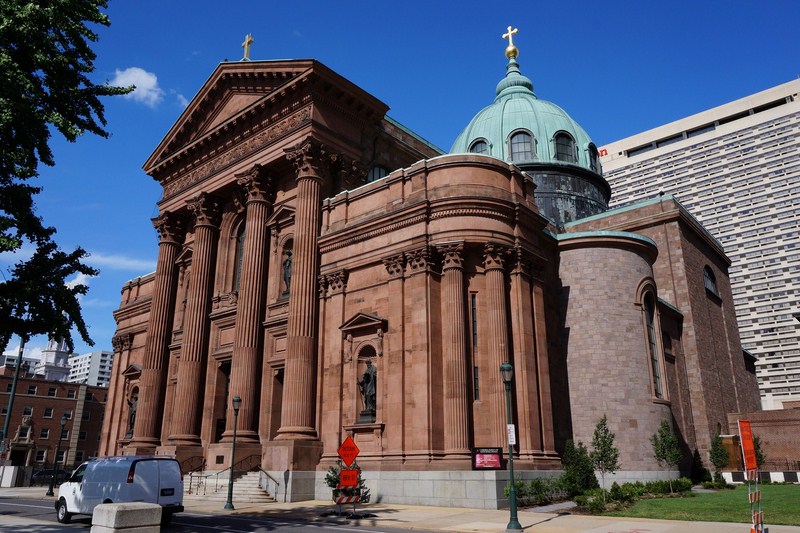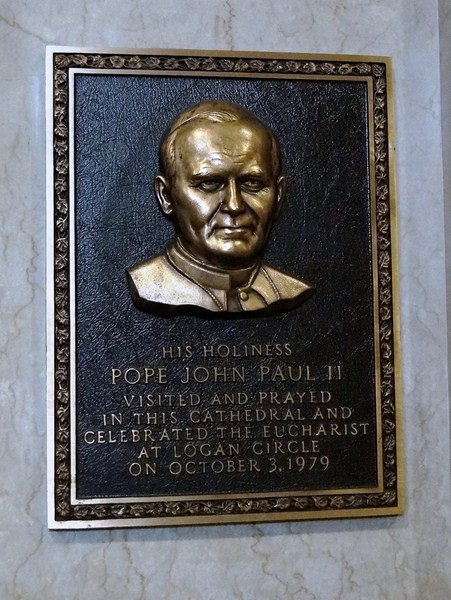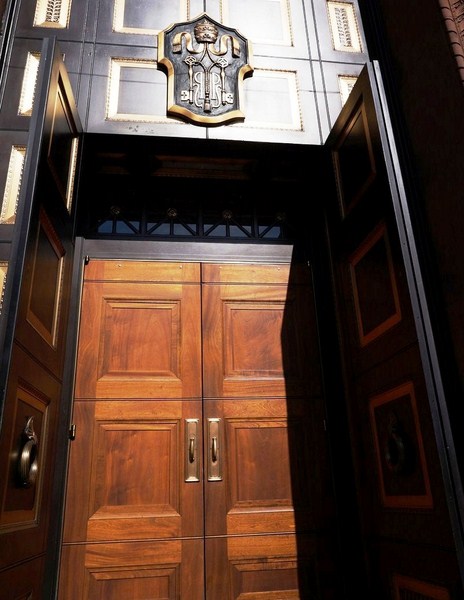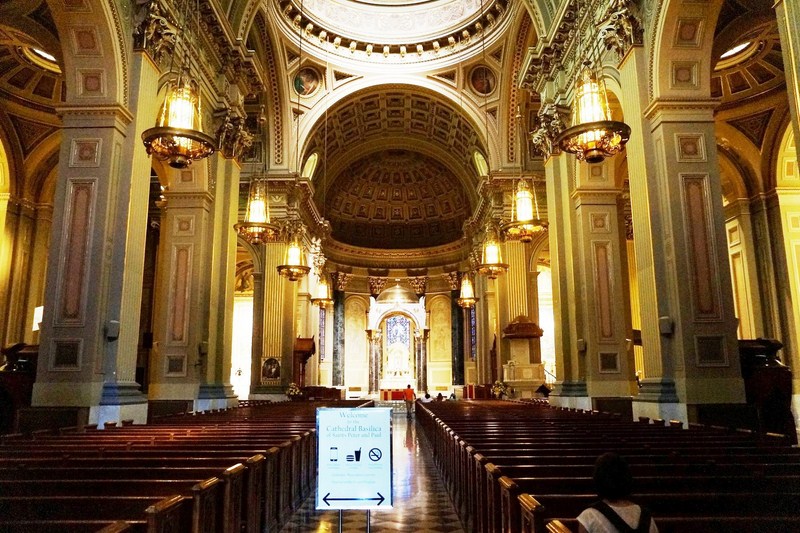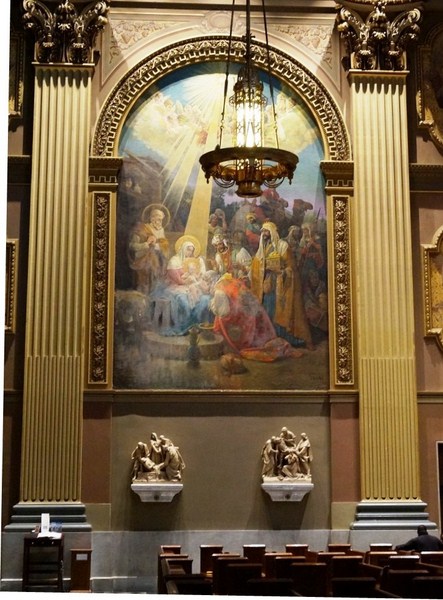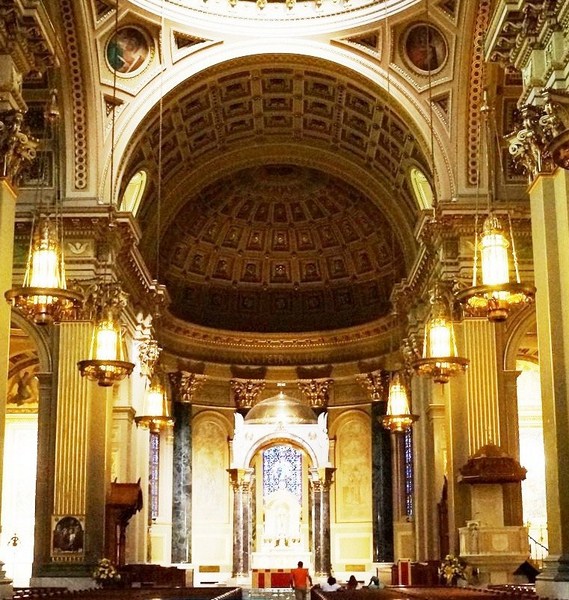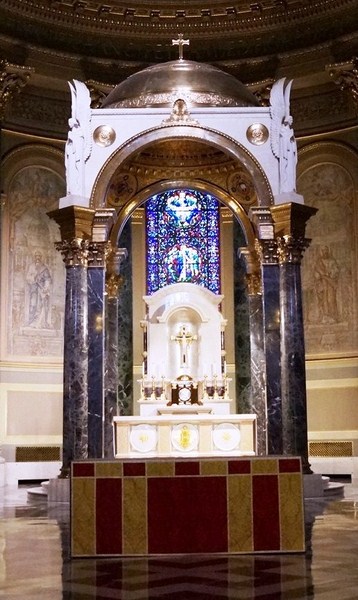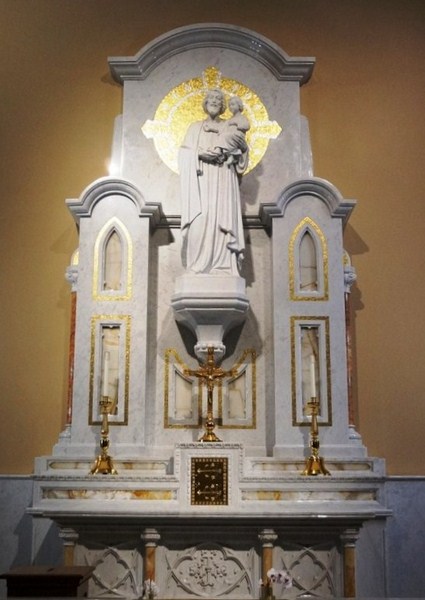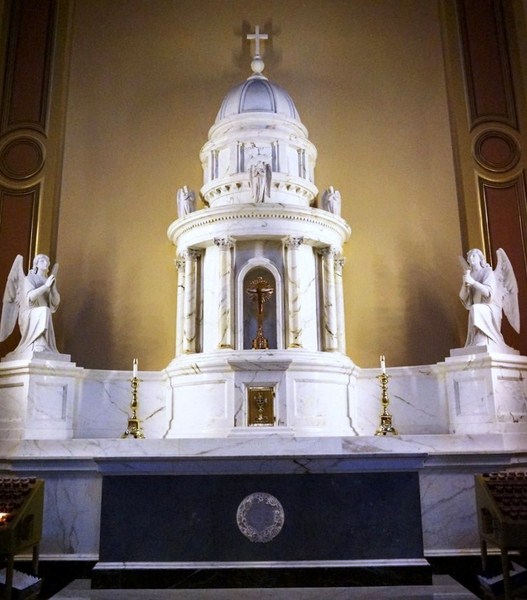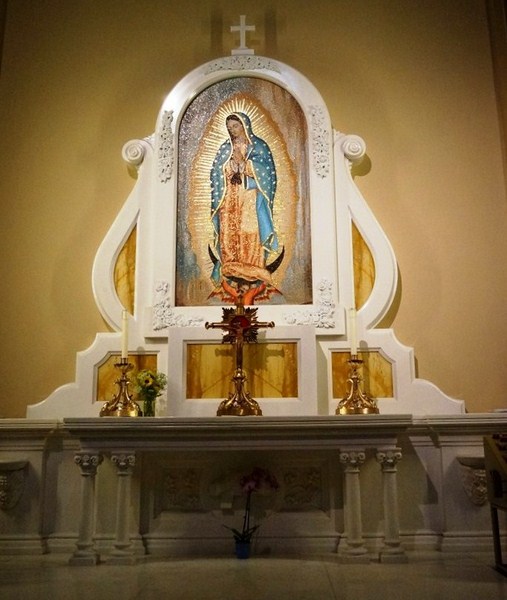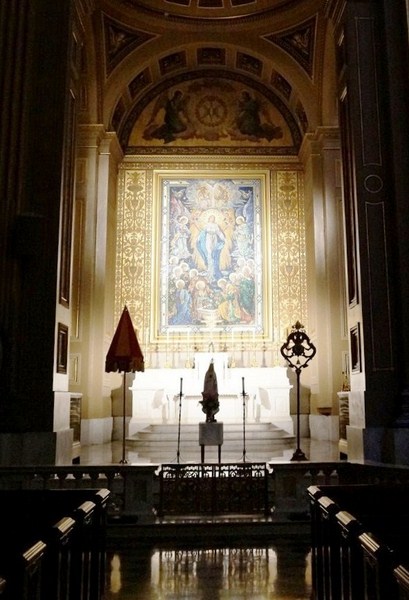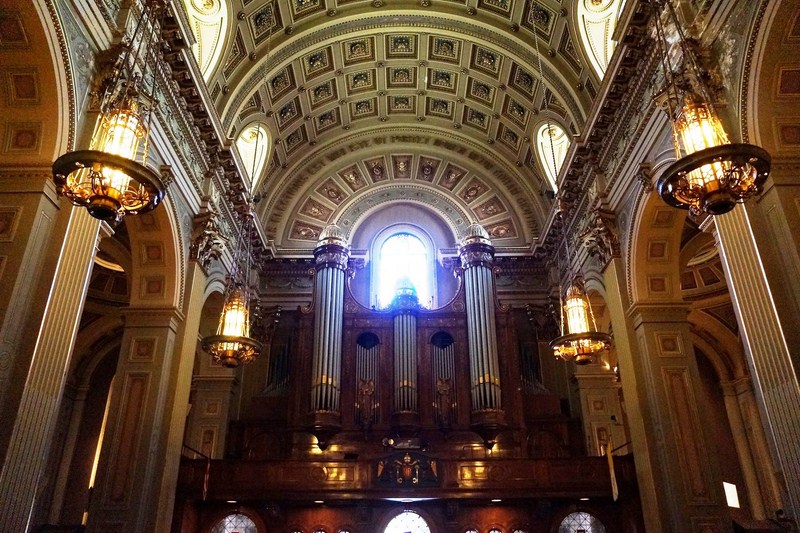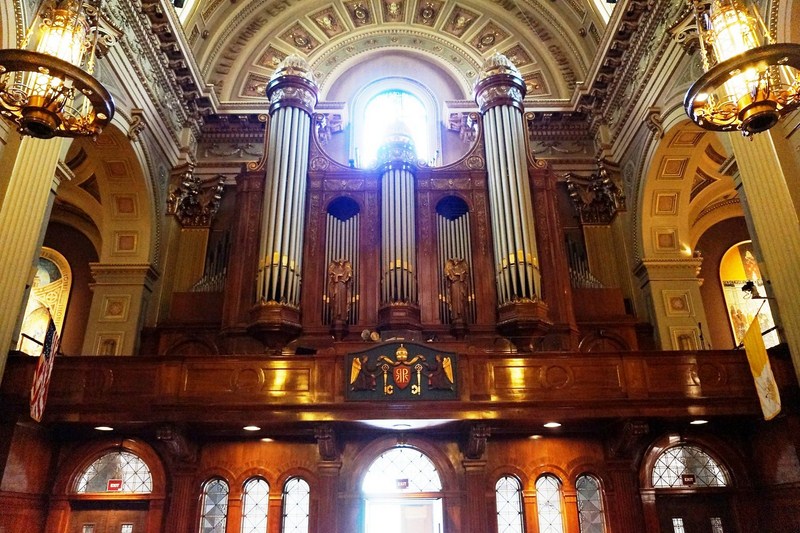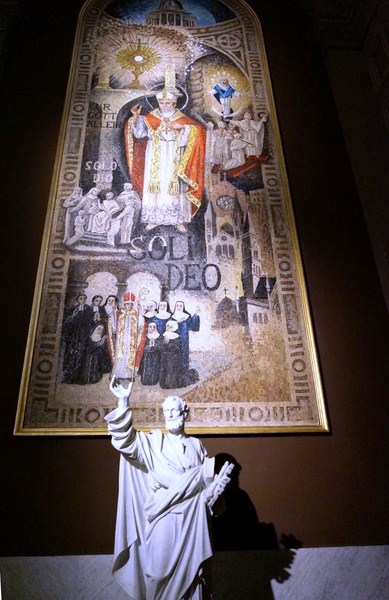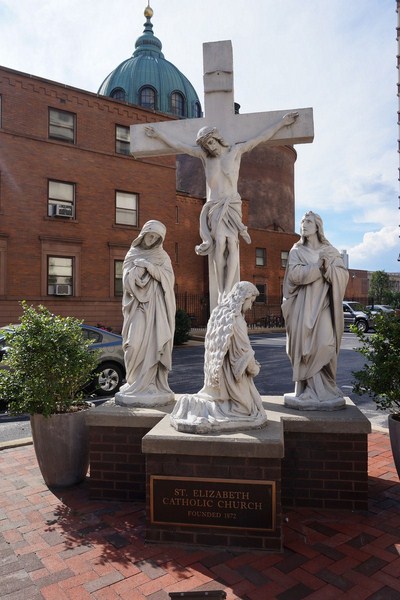The beautiful and historic Cathedral Basilica of Saints Peter and Paul, the head church of the Roman Catholic Archdiocese of Philadelphia (raised to the rank of an archdiocese in 1875), was built from 1846-1864. The cathedral was the site of two papal Masses
Here are some interesting trivia regarding this cathedral:
- The cathedral is the largest Catholic church in Pennsylvania
- It is the largest brownstone structure and one of the most architecturally notable structures in the city of Philadelphia.
- Presented in a Roman–Corinthian style of architecture, the cathedral was modeled after the Lombard Church of St. Charles (San Carlo al Corso) in Rome.
- It is 250 ft. long, 136 ft. wide and approximately 156 ft. high from the floor to the top of the dome (209 ft. from the floor to the top of the 11-foot gold cross atop the dome and 314 ft. from the pavement).
- It was designed by Napoleon LeBrun (a native Philadelphian born to French-Catholic parents) from original plans by the Rev. Mariano Muller and the Rev. John B. Tornatore.
- The brownstone facing, now atmosphere and weather-worn and pinkish in color, originally came from quarries in Connecticut and northern New Jersey.
- The cathedral’s pipe organ, one of the largest in Philadelphia, has 75 ranks of pipes, 90 stops and 4,648 pipes on 4 manuals and pedals.
- According to local lore and the parish’s history, the Philadelphia Nativist Riots, which represented the height of Anti-Catholicism and Know-Nothingism in Philadelphia, greatly influenced the design of the building. The light-colored, tinted clerestory windows were built very high to inhibit vandalism from possible future riots (Legend has it that the architect and construction workers would throw stones into the air to determine the height of where the windows would be placed).
Here’s the historical timeline of the cathedral:
- On September 6, 1846, it, the cornerstone of the cathedral, a gift of Mr. James McClarnan, was laid in the presence of some 8,000 persons.
- From 1846 to 1851, LeBrun supervised the project
- In 1851, by John Notman (noted for his Philadelphia ecclesiastical architecture) took over the supervision of the project
- In 1857, LeBrun’s again supervised its construction.
- On November 20, 1864, the cathedral was dedicated and solemnly blessed, with Bishop James Wood officiating.
- On July 6, 1877, the altars, dedicated to the Assumption of the Blessed Virgin Mary and the Sacred Heart, were blessed.
- On June 30, 1890, it was solemnly consecrated.
- From 1914-1915, Arch. Henry D. Dagit completely renovated the cathedral interior under the direction of Archbishop Edmond F. Prendergast, adding the apse behind the High Altar, while D’Ascenzo Studios executed the apse’s stained glass windows and mosaic murals.
- During the 1955-1957 renovation and expansion, semicircular apse was built to extend the sanctuary to its present depth of 54 ft.; lower stained glass windows were added to the new sanctuary apse (added with a stained glass window, from Conmick of Boston, depicting the Baptism of Jesus by St. John the Baptist and Sts. Peter and Paul baptizing prisoners in the Mamertine prison in Rome with water from a miraculous spring) and baptistery; and cast bronze doors (leading from the main façade into the narthex, or vestibule) and bronze handrails (along with the doors of the Race Street entrance to the cathedral) were installed.
- On June 24, 1971, the cathedral was listed on the U.S. National Register of Historic Places.
- On October 3, 1979, Pope John Paul II celebrated a Papal Mass here.
- On September 26, 2015, Pope Francis celebrated a Papal Mass here.
The cathedral’s aqua oxidized-copper vaulted dome, rising 156 ft. above the floor, and grand Palladian facade, designed by Notman in the Italian Renaissance manner, were added after 1850.
The old chapel on the north side of the basilica that was built in 1856 was replaced the Chapel of Our Lady of the Blessed Sacrament which was dedicated on October 11, 1955, the Feast of the Maternity of Our Lady.
The building’s main façade, graced by four massive, 60 ft. high (6 ft. in diameter) Corinthian columns, has niches with bronze statues of the Sacred Heart (to whom the diocese was consecrated by Bishop Wood on October 15, 1873); Mary, the Immaculate Conception (proclaimed patroness of the United States at the First Council of Baltimore in 1846, it was sculpted at the Joseph Sibbel Studios and installed in 1918); and Saints Peter and Paul, (the patrons of the Cathedral Basilica) both sculpted in the Gorham Studios.
The spacious interior, largely decorated by Constantino Brumidi (a Greek/Italian-American painter best known for his murals in the United States Capitol in Washington, D.C.), features an oversized apse of stained glass and red antique marble in proportions reminiscent of Roman churches. The two large paintings, The Ascension of our Lord and the Adoration of the Kings from the East, decorate the ends of the transept.
The 50 ft. wide and 192 ft. long great nave, lighted by bronze chandeliers weighing a half ton each, has a vaulted ceiling rising 80 ft. above the floor. The nave and transept are separated from the side aisles by massive pillars (which give way to arched recesses for altars and the baptistery) while a white marble altar rail, with three bronze gates, separate them from the sanctuary.
The Assumption of the Virgin into Heaven (1868), the striking oil on canvas ceiling mural in the dome, the pendentives and the portraits of St. Matthew (Angel), St. Mark (Lion), St. Luke (Winged Ox) and St. John (Eagle) in the medallions on the spandrels at the base of the dome, were painted by Brumidi. At the dome’s next level are panel paintings entitled Angels of The Passion (with each group of angels is an emblem of the Passion).
The ornate main altar, built with Botticino marble with Mandorlato rose marble trim, and the three altars, on each of the side aisles, point to an Italian Renaissance flavor. The front of the main altar is decorated by 3 gilded bronze discs, the central one bearing the HIS, the Greek inscription of Jesus Christ.
The 38 ft. high baldachin (or canopy) over the altar, of antique Italian marble, is surmounted by a semicircular bronze dome, the underside of which is a marble mosaic whose central figure is a dove, the symbol of the Holy Spirit.
The mosaic carries in Latin an inscription which translates: “In every place there is offered and sacrificed in My Name a clean oblation.” White, 10 ft. high, Italian marble angels, its decorative rosettes of Botticino marble, stand at the corners of the baldachin.
Two side altars are dedicated to the Blessed Virgin Mary and the Sacred Heart of Jesus.
The shrines dedicated to St. Katharine Drexel and St. John Neumann have 7-ft. high sculpted marble statues of these recent saints.
St. Katharine’s shrine retains the original altar donated in the 19th century by St. Katharine herself, along with her sisters, Elizabeth and Louise, as a memorial to their deceased parents, Francis and Emma Drexel.
The memorial altar to Archbishop Patrick John Ryan, to the right of the altar dedicated to St. Katharine Drexel, was designed with the ancient Celtic Cross, to the left of which is the statue of St. Patrick while to the right is the statue of St. John the Evangelist.
The altar on the south side, between the Shrine to Our Lady of the Miraculous Medal and the baptistery, is dedicated to the Holy Souls and was modeled after the Blessed Sacrament altar in St. Peter’s Basilica in Rome. The Shrine to Our Lady of Guadalupe, installed in December 2009, was the thought of Cardinal Justin Francis Rigali.
The choir stalls and the Cardinal’s chair, both of American black walnut, have wooden screens inspired by the famous metal rejería found in many cathedrals in Spain. The octagonal pulpit, opposite the Cardinal’s chair, has a carved walnut canopy and was constructed with marble matching the altar.
The baptistery, enclosed by a bronze screen inspired by a similar one in the Cathedral of Toledo in Spain, has the coat-of-arms of Cardinal John Francis O’Hara (carrying his motto in Latin “If you follow her you shall not go astray”) set into the top center of the screen.
The altar dedicated to the Holy Souls, to the left of the baptistery, is modeled after the Blessed Sacrament Altar in St. Peter’s Basilica in Rome. The main sanctuary and eight side chapels can comfortably seat approximately 1,240 worshippers (1,500 with added temporary chairs) in pews of walnut wood. The confessionals, their privacy secured by red velvet curtains, have a walnut finish while the floor is of white and black marble tiles.
The choir loft, at the rear of the cathedral, has a richly ornamental organ screen (or casing) designed by Otto R. Eggers (who also designed the Jefferson Memorial, the Mellon Art Gallery, and the National Gallery of Art, all in Washington, D.C.) and built with carved walnut. The casing which encloses the pipes is one of the most outstanding in the country. High above the screen is a majestic stained glass window of the Crucifixion. The case enclosing the organ was most likely built by Edwin Forrest Durang, one of the cathedral architects and builders.
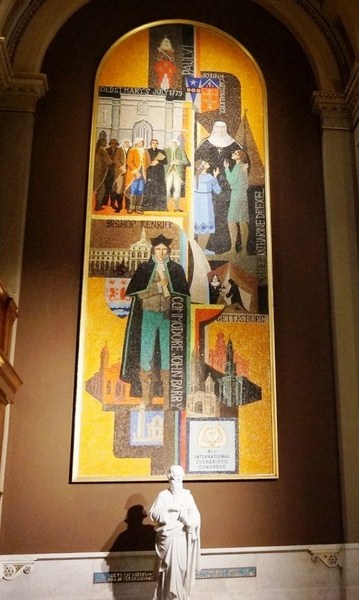
A mural (north), designed by Leandro Velasco, depicts people and events in the Church’s involvement with Pennsylvania history. At the top are the coats of arms of Pope Paul VI and John Cardinal Krol, and the bottom is the symbol of the 41st Eucharistic Congress, Philadelphia, 1976. The historic scenes are of George Washington and members of the Continental Congress at Old St. Mary’s Church; St. Katharine Drexel, Sisters of St. Joseph caring for the wounded on the Gettysburg battlefield; and Commodore Barry, founder of the United States Navy.
The statues of St. Peter (south side/rear) and St. Paul (north side/rear), the patrons of the cathedral, were moved from the now closed Church of the Most Blessed Sacrament and installed inside the cathedral in August 2009.
In the bowels of the building, under the main altar of the cathedral, is the compact “Crypt of the Bishops” with the remains of most of the bishops and archbishops, as well as several other clergymen, of Philadelphia. The crypt, reached by stairs behind the main altar, is the final resting place of:
- Michael Francis Egan, O.S.F. – the first Bishop of Philadelphia, he was consecrated on October 28, 1810 and died in 1814.
- Henry Conwell – second Bishop of Philadelphia, he was consecrated 1820. He died on April 22, 1842.
- Francis Patrick Kenrick – the third Bishop of Philadelphia, he was elevated to Archbishop of Baltimore in 1851. He died in 1863.
- James Frederick Wood – the fifth Bishop, he became the first Archbishop of Philadelphia in 1875. He died on June 20, 1882.
- Patrick John Ryan the sixth Bishop, he was the second Archbishop of Philadelphia. He died on February 3, 1911.
- Edmond Prendergast – the seventh Bishop, he was the third Archbishop of Philadelphia. He died on February 26, 1918.
- Dennis Joseph Dougherty – the eighth Bishop, he was the fourth Archbishop of Philadelphia and the first to be elevated to Cardinal. He died on May 31, 1951.
- John Krol– the tenth Bishop, he was the sixth Archbishop of Philadelphia and the third to be elevated to Cardinal. He died on March 3, 1996.
- Anthony Joseph Bevilacqua – the eleventh Bishop, he was the seventh Archbishop of Philadelphia and the fourth to be elevated to Cardinal. He died on January 31, 2012.
- Ames J. Carroll – bishop who died in 1913.
- Francis I. Clark – bishop who died in 1918.
- Cletus Benjamin – bishop who died on May 15, 1961.
- Gerald P. O’Hara – bishop who died on July 16, 1963
- Gerald V. McDevitt – bishop who died on September 29, 1980.
- Francis Patrick O’Neill – pastor of St. James, Philadelphia, 1843–1882, died 1882.
- Maurice Walsh – pastor of St. Paul’s Philadelphia (1832–1888) who died in 1888.
- James Corcoran – professor at Saint Charles Seminary who died in 1889.
- Francis Brennan – Prefect of the Sacred Congregation for the Discipline of the Sacraments,he was the first American to receive an appointment to the Roman Curia. He died on July 2, 1968.
- John Patrick Foley – President of the Pontifical Council for Social Communications, he was the seventh Philadelphia priest to be elevated to Cardinal. He died on December 11, 2011.
Cathedral Basilica of Saints Peter and Paul: 18th St. & Benjamin Franklin Parkway, (opposite Logan Square) Philadelphia, Pennsylvania 19103. Tel: (215) 561-1313. Open daily, Mondays to Fridays, 7:30 AM to 5 PM; Saturdays, 9 AM to 5:15 PM; Sundays, 8 AM to 5 PM.

